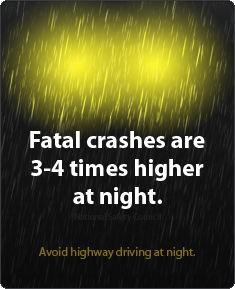News
ADAS in cars in India: Is it useful or not?
The adaptive cruise control in the Volvo XC40 worked well whereas the autonomous emergency braking in the Tata Safari was too intrusive.
BHPian Aditya recently shared this with other enthusiasts.
ADAS in India : Do you use it? If yes, how?
ADAS (Advance Driver-Assistance Systems) has been introduced in many cars in India. Not just the expensive luxury marques, but also relatively affordable cars from brands like Mahindra, MG and Tata are also now offering Level 2 ADAS in their cars. These systems include various features like forward collision warning, auto emergency braking, lane departure warning, lane keep assist, adaptive cruise control, smart pilot assist, traffic sign recognition and high beam assist among others.
These features help in reducing driver stress and crashes. Two years ago when we drove the Mahindra XUV700, on a test track, where very few other cars were around, these features really impressed us. However, on our city roads, things are different. Lots of other road users who may not follow rules make matters difficult. In the traffic of India's cities in particular, ADAS can be very irritating.

As an example, we had the Tata Safari Red Dark Edition on test earlier this year. The autonomous emergency braking kept getting triggered due to the system detecting some or the other obstacle in the way. The car kept braking automatically even when it was not necessary. It was too intrusive and I was worried that cars following me would crash into mine. This forced me to turn the autonomous emergency braking feature off.

At the same time, the blind spot monitoring system was very useful.

Again, in the Volvo XC40, the adaptive cruise control was useful. I didn't have to touch the pedals on the highway. The car took care of the acceleration and braking very well.
Then there was the lane keep assist feature that worked well too. Remember that you have to use the indicator before changing the lanes or else the steering will resist your inputs.

Some features like the high beam assist and driver attention warning don't require any input from the driver and work really well. These features ensure your safety and that of others on the road.
From my experience, when it comes to ADAS, I feel that some features are useable, but some just need to be turned off.
Do you use ADAS? If yes, how?
Here's what GTO had to say about the matter:
Have used ADAS in almost all the cars it's available in, including the high-end Mercedes. Have found all of them to be useless in Indian conditions because they are tuned too conservatively for Indian conditions.
And that will never change because automated systems like these will always err on the side of safety.
One thing that is universally dangerous is the emergency braking though. These cars slam on the brakes rather unexpectedly. While it can unnerve the driver, any car behind with poorer brakes will rear-end it. As it happened with a Tucson-owning BHPian.
As of date, ADAS is purely a gizmo to make a sale, show a strong feature list and portray the product as being "futuristic".
Here's what BHPian for_cars1 had to say about the matter:
While this is a great feature to have, the concerning aspect is how these autonomous aids have the potential to make the driver complacent and diminish/turn off his/her reflexes to go for the pedals in a normal car without these aids.
In a normal non-ADAS vehicle, driving as an activity engages our actions to accelerate or brake in an almost autonomous/reflex-driven way, we really don't have to think about braking, the foot by default reaches to the right pedals even in a fraction of a second making all the difference between getting into danger or being safe.
Imagine everyone getting used to these driver aids which will take all the decisions and disable our "human-autonomous" driver actions. Such drivers will never be able to drive a normal car safely. If there is a need to do emergency braking, such ADAS-drivers will simply not find their leg going for the brakes within the critical needed time.
Here's what BHPian Cyborg had to say about the matter:
I ride a Ducati Multistrada V4S which is equipped with ADAS and Blind Spot Monitoring.
ADAS - This works like a charm, tried it a couple of times. It’s a bit unnerving initially for a motorcycle because she brakes and accelerates according to the vehicle ahead and allows the rider to set a distance to the vehicle ahead (near, medium or far). In India, because lane discipline is almost nonexistent it is a challenge because the front radar will be kind of constantly searching if the vehicle ahead does not keep its lane. Abroad it could be a boon on long rides. I don’t use it anymore.
Blind Spot Monitoring - This is a really great safety feature introduced by Ducati as a segment first. I have been riding for more than 40 years but still find this feature extremely useful because it works exactly like the name suggests. Lights on the mirrors light up when a vehicle is in your blind spot alerting you of potential danger. I initially thought it would be distracting but it’s subtle and the implementation is perfect with the radar at the back of the motorcycle. The rider can adjust the intensity of the light as required from the TFT screen. The system itself may be switched off if you wish but I don’t think anyone would want to do that after seeing the effectiveness.
Cheers
Here's what BHPian anjan_c2007 had to say about the matter:
ADAS is a great feature, keeping our safety in mind. Its availability in affordable brands and models is a boon for most of us who find it really useful.
However, a particular feature may or may not be liked by an individual. Such feature/s can always be disabled by the respective individual/s. The activation and usage of ADAS can hence be need-based.
Check out BHPian comments for more insights and information.
- Tags:
- Indian
- Member Content
- ADAS
- Safety










.jpg)







